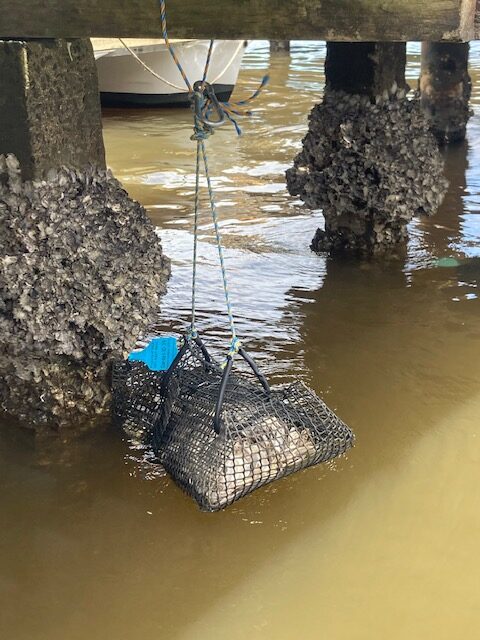A check last week on the progress of the Noosa River Oyster Gardening Project showed a diversity of species of oysters were growing and colonising as hoped and a strong interest in the project was continuing in the community.
About a year ago Noosa Integrated Catchment Association (NICA) and The Nature Conservancy (TNC) began the project with a trial by deploying oyster baskets into the Noosa River estuary containing five kilograms of washed, recycled oyster shells to determine their capacity to remain robust and attract wild oysters and other marine species.
The success of the trial has led to a broader Oyster Gardening Project whereby local Noosa residents adopt and care for baskets of oyster shell over a six to 12 month period.
Over this time, wild oysters and other local Noosa marine life colonise the oyster baskets and grow and the baskets protect these more vulnerable marine species from predatory fish, giving them a head start in life.
Last week TNC’s Megan Connell and Craig Bohm were joined by local residents to assess the gardens that had been cited in various locations around the estuary attached to structures such as bridges.

They identified three species of Sydney rock oyster and two species of pearl oysters in the baskets with other marine species such as hairy mussels attaching to the growing colonies.
“They’re different in different parts of the river. We have more of the pearl oysters in the river, not as much in the canal estate. We’re pleased to see we have a really good growth of oysters in the river and good growth in the canal estate as well,“ Craig said.
Once the oysters in the baskets are large enough to resist marine predators, they are destined to be released into the nooks and crannies of the oyster reefs that were established last November at key sites in the Noosa River.
Craig said the assisted restoration of the reefs would continue in this way for some time.
“We have independent experts monitoring the reefs. They’re excited about what they’re seeing,“ he said.
He said the oyster gardening project had generated much interest in the community and it was exciting to see.
“It’s important to have it locally-driven,“ he said.
“The locals can take it and the project will continue on. They can extend this into other areas, grow it steadily.“
Article thanks to Noosa Today


